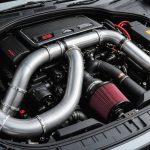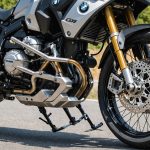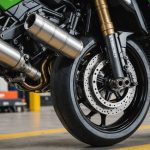Mastering Drift: A Complete Guide to Safely and Legally Tuning Your UK Car for Maximum Drift Performance
Understanding Drifting: The Basics and Beyond
Drifting, a driving technique that involves intentionally oversteering while maintaining control, has become a thrilling and popular form of motorsport. Originating on the mountain roads of Japan in the early 1990s, drifting has evolved into a global phenomenon, captivating drivers and spectators alike with its unique blend of speed, skill, and style.
To get started, it’s crucial to understand the fundamental principles of drifting. Drifting involves using the throttle, brakes, clutch, and steering to keep the car in a state of oversteer, where the rear wheels lose traction and the car slides sideways. This requires a high level of car control and coordination, as drivers must balance the amount of countersteer with the modulation of the throttle and brakes to maintain the slide while adhering to the racing lines or designated “clipping points”[3][5].
Additional reading : Your Essential Guide to Diagnosing and Resolving Common Electrical Problems in 1990s UK Cars
Essential Modifications for Drift Cars
Before you can start drifting, your car needs to be properly modified to handle the demands of this driving technique. Here are some key modifications to consider:
Drivetrain
A mechanical limited slip differential (LSD) is essential for drifting. The preferred type is the clutch-type LSD in “two-way” form, which provides consistent and aggressive lockup behavior under both acceleration and deceleration. Other options include helical torque-sensing differentials like the Torsen or Quaife, which are also adequate but less common in drift cars[5].
This might interest you : Essential Insights: Key Details to Examine in a Full-Service History When Purchasing a Used Car in the UK
Gear Ratios
Changing the final gear ratio can significantly impact your drift performance. Closer ratios help keep the engine in the power band, especially on tracks with tight corners. Some drifters opt for four-gear transmissions with more open-ratio gears, similar to those used in NASCAR, to reduce the number of shifts during a run[5].
Steering and Suspension
Steering angles are critical in drifting. Modifications such as modified steering knuckles or uprights and extended control arms can allow for higher steering angles. Full lock kits that adjust the vehicle’s original scrub radius, kingpin axis, Ackermann angle, and other kinematics are also essential to maximize front grip and eliminate mechanical bind at high steering angles[5].
Suspension Tuning
A stiff suspension is necessary to reduce body roll and maintain stability during slides. Springs and shock absorbers are tuned based on the track layout and the driver’s skill level. However, it’s important to note that Ackermann geometry, while helpful for turning, can inhibit the ability to slide sideways at full lock[5].
Safety First: Preparing Your Car and Yourself
Safety is paramount when it comes to drifting. Here are some key considerations to ensure your safety and the safety of others:
Vehicle Safety Checks
Before modifying your car, make sure it is in good condition. Regularly check the brakes, tires, and suspension to ensure they can handle the stresses of drifting. Always use high-quality aftermarket parts that are designed for drifting[5].
Driver Safety Gear
Invest in proper safety gear, including a helmet, HANS device, and a fire suit. These are essential for protecting you in case of an accident.
Track Safety
Always drift on a designated track or a safe, closed course. Never drift on public roads, as it is illegal and highly dangerous. Make sure the track is well-maintained and has adequate safety features such as run-off areas and barriers.
Customizing Your Car for Drift Performance
Customization is a crucial aspect of drifting, allowing you to tailor your car to your driving style and the specific demands of the track.
Throttle Response Controllers
Tools like the Pedal Commander throttle response controller can significantly enhance your driving experience. This device connects to your vehicle’s electronic throttle control system, removing throttle delay and offering customizable driving modes. With four preset modes (Eco, City, Sport, and Sport+) and nine sub-settings each, you can fine-tune your throttle response to match any driving scenario, from calm highway drives to high-performance track events[1].
Table: Comparison of Drift Car Modifications
| Modification | Description | Importance in Drifting |
|---|---|---|
| Mechanical LSD | Ensures consistent traction and control during slides | High |
| Gear Ratio Changes | Keeps the engine in the power band and reduces shifts | Medium |
| Steering Angle Mods | Allows for higher steering angles and better control | High |
| Suspension Tuning | Reduces body roll and maintains stability | High |
| Throttle Response Ctrl | Enhances throttle sensitivity and responsiveness | Medium |
| Safety Gear | Protects the driver in case of an accident | High |
Driving Techniques for Mastering Drift
Mastering the art of drifting requires a combination of skill, practice, and the right driving techniques.
Observing and Planning
Good observation and planning skills are essential. Keep a safe distance from the car ahead to see what’s coming up on the road and plan your moves accordingly. This skill is not just useful for drifting but also for everyday driving, as it helps in maintaining a smooth flow of traffic and improving fuel economy[2].
Car Sympathy
Develop a sympathetic relationship with your car. Use smooth steering inputs, gentle braking, and seamless gear changes. Allow your car to warm up thoroughly before pushing it hard, and make sure all parts of the drivetrain are up to temperature[2].
Countersteer and Throttle Control
The key to drifting is mastering the countersteer and throttle control. As you enter a turn, intentionally oversteer by applying the throttle and then countersteer by turning the wheels in the direction of the slide. Modulate the throttle to balance the car and maintain the slide. Too little throttle and the car will lose momentum; too much and it will spin out[3][5].
Legal and Safe Drifting in the UK
Drifting in the UK must be done legally and safely to avoid any legal repercussions and ensure the safety of all involved.
Designated Tracks
Always drift on designated tracks or closed courses. Events like the Modified Live at Snetterton and the British Drift Championship provide safe and legal environments for drifting enthusiasts to showcase their skills[4].
Compliance with Regulations
Make sure your car complies with all relevant regulations and safety standards. This includes having the necessary safety gear and ensuring your car is in good working condition.
Community and Resources
Joining a community of like-minded enthusiasts can be incredibly beneficial for your drifting journey.
Stance Auto Magazine
Resources like Stance Auto Magazine offer in-depth features, expert insights, and updates on the latest events and techniques. Joining such communities can help you stay informed and connected with other drifters[3].
Social Media and Forums
Follow drifting communities on social media platforms like Facebook and Twitter, and participate in online forums to learn from others, share your experiences, and get tips on modifications and driving techniques.: Your Journey to Mastering Drift
Mastering the art of drifting is a rewarding and challenging journey that requires dedication, practice, and the right knowledge. By understanding the basics of drifting, modifying your car correctly, focusing on safety, and honing your driving techniques, you can enhance your performance and enjoy this exhilarating sport to the fullest.
As you embark on this journey, remember to always prioritize your safety and the safety of others. Drifting is not just about speed and style; it’s about control, finesse, and a deep connection with your vehicle.
Practical Insights and Actionable Advice
- Start with the Basics: Before diving into advanced modifications, make sure you have a good understanding of the fundamental principles of drifting.
- Practice Regularly: Consistent practice is key to improving your skills. Start with slow speeds and gradually increase as you become more comfortable.
- Join a Community: Connecting with other drifters can provide valuable insights, tips, and support.
- Stay Safe: Always prioritize safety by using proper safety gear, driving on designated tracks, and ensuring your car is in good condition.
By following these guidelines and staying committed to your craft, you’ll be well on your way to mastering the art of drifting and enjoying the thrill of this unique and exciting sport.











